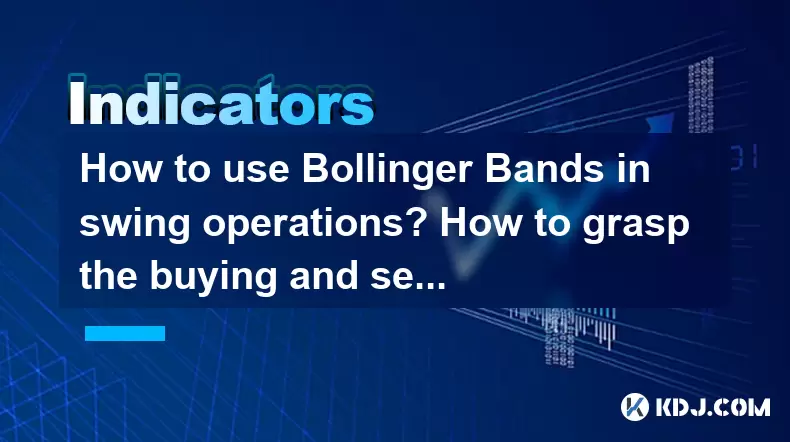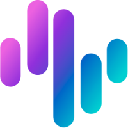-
 Bitcoin
Bitcoin $117800
-3.15% -
 Ethereum
Ethereum $4539
-3.66% -
 XRP
XRP $3.072
-6.08% -
 Tether USDt
Tether USDt $1.000
0.02% -
 BNB
BNB $834.3
-1.03% -
 Solana
Solana $193.1
-2.71% -
 USDC
USDC $0.9997
-0.01% -
 TRON
TRON $0.3583
-0.87% -
 Dogecoin
Dogecoin $0.2233
-8.06% -
 Cardano
Cardano $0.9033
3.60% -
 Chainlink
Chainlink $22.34
-5.78% -
 Hyperliquid
Hyperliquid $44.87
-4.90% -
 Stellar
Stellar $0.4226
-6.29% -
 Sui
Sui $3.765
-5.57% -
 Bitcoin Cash
Bitcoin Cash $588.5
-3.94% -
 Ethena USDe
Ethena USDe $1.001
0.00% -
 Hedera
Hedera $0.2489
-5.54% -
 Avalanche
Avalanche $23.69
-5.77% -
 Litecoin
Litecoin $120.8
-6.90% -
 Toncoin
Toncoin $3.398
-2.63% -
 UNUS SED LEO
UNUS SED LEO $9.276
0.31% -
 Shiba Inu
Shiba Inu $0.00001285
-7.22% -
 Uniswap
Uniswap $10.92
-9.38% -
 Polkadot
Polkadot $3.991
-5.68% -
 OKB
OKB $94.79
-8.25% -
 Dai
Dai $0.9998
0.01% -
 Bitget Token
Bitget Token $4.553
-4.67% -
 Cronos
Cronos $0.1514
-8.71% -
 Ethena
Ethena $0.7243
-7.57% -
 Aave
Aave $310.5
-5.14%
How to use Bollinger Bands in swing operations? How to grasp the buying and selling points?
Use Bollinger Bands for swing trading by identifying buying points at the lower band and selling points at the upper band, enhancing with RSI and MACD for better results.
May 22, 2025 at 06:42 am

How to Use Bollinger Bands in Swing Operations? How to Grasp the Buying and Selling Points?
Bollinger Bands are a popular technical analysis tool used by traders to identify potential buying and selling points in the market. When applied to swing trading, Bollinger Bands can help traders capture short to medium-term price movements. This article will delve into the intricacies of using Bollinger Bands for swing operations and provide detailed guidance on identifying optimal entry and exit points.
Understanding Bollinger Bands
Bollinger Bands consist of three lines: the middle band, which is a simple moving average (SMA), and two outer bands that are standard deviations away from the middle band. Typically, the middle band is set at a 20-period SMA, and the outer bands are set at two standard deviations above and below the middle band.
The purpose of Bollinger Bands is to provide a relative definition of high and low prices and to identify periods of high and low volatility. When the bands tighten, it indicates low volatility, and when they widen, it signifies high volatility. These characteristics make Bollinger Bands an excellent tool for swing traders who aim to profit from price swings within a trend.
Setting Up Bollinger Bands for Swing Trading
To effectively use Bollinger Bands for swing trading, you need to set them up correctly in your trading platform. Here's how to do it:
- Open your trading platform and navigate to the chart of the cryptocurrency you want to trade.
- Add Bollinger Bands to the chart. In most platforms, you can do this by clicking on the indicators menu and selecting Bollinger Bands.
- Configure the settings. Set the middle band to a 20-period SMA, and set the outer bands to two standard deviations. Some traders may experiment with different periods and deviations, but 20 and 2 are standard settings.
Once you have set up the Bollinger Bands, you can start analyzing the chart to identify potential swing trading opportunities.
Identifying Buying Points with Bollinger Bands
Buying points in swing trading are often identified when the price touches or crosses the lower Bollinger Band. This indicates that the price may be oversold and could be due for a rebound. Here's how to spot these opportunities:
- Look for the price to touch or cross the lower Bollinger Band. This is a potential signal that the price is at a low point.
- Check for confirmation. A bullish candlestick pattern, such as a hammer or a bullish engulfing pattern, can confirm the potential reversal.
- Enter the trade once you have confirmation. Place a buy order at the close of the confirming candlestick.
For example, if you are trading Bitcoin and you see the price touch the lower Bollinger Band and then form a bullish engulfing pattern, you would enter a long position at the close of the bullish engulfing candlestick.
Identifying Selling Points with Bollinger Bands
Selling points in swing trading are typically identified when the price touches or crosses the upper Bollinger Band. This suggests that the price may be overbought and could be due for a pullback. Here's how to identify these opportunities:
- Look for the price to touch or cross the upper Bollinger Band. This indicates that the price may be at a high point.
- Check for confirmation. A bearish candlestick pattern, such as a shooting star or a bearish engulfing pattern, can confirm the potential reversal.
- Enter the trade once you have confirmation. Place a sell order at the close of the confirming candlestick.
For instance, if you are trading Ethereum and you see the price touch the upper Bollinger Band and then form a bearish engulfing pattern, you would enter a short position at the close of the bearish engulfing candlestick.
Using Bollinger Band Squeezes for Swing Trading
Bollinger Band squeezes occur when the bands tighten, indicating a period of low volatility. This can often precede a significant price move, making it a valuable signal for swing traders. Here's how to use squeezes effectively:
- Identify a Bollinger Band squeeze. Look for the bands to narrow significantly, indicating low volatility.
- Wait for a breakout. A breakout above the upper band can signal a potential uptrend, while a breakout below the lower band can signal a potential downtrend.
- Enter the trade in the direction of the breakout. If the price breaks above the upper band, enter a long position. If it breaks below the lower band, enter a short position.
For example, if you are trading Litecoin and you see the Bollinger Bands squeeze and then the price breaks above the upper band, you would enter a long position to capitalize on the potential uptrend.
Combining Bollinger Bands with Other Indicators
While Bollinger Bands can be effective on their own, combining them with other indicators can enhance your swing trading strategy. Here are a few examples:
- Relative Strength Index (RSI). Use RSI to confirm overbought or oversold conditions. If the price touches the lower Bollinger Band and the RSI is below 30, it can confirm an oversold condition and a potential buying opportunity.
- Moving Average Convergence Divergence (MACD). Use MACD to confirm trend direction. If the price touches the upper Bollinger Band and the MACD line crosses above the signal line, it can confirm a potential uptrend and a selling opportunity.
For instance, if you are trading Bitcoin Cash and you see the price touch the lower Bollinger Band, the RSI is below 30, and the MACD line crosses above the signal line, you would have multiple confirmations of a potential buying opportunity.
Managing Risk in Swing Trading with Bollinger Bands
Risk management is crucial in swing trading, and Bollinger Bands can help you set appropriate stop-loss levels. Here's how to manage risk effectively:
- Set stop-loss orders. Place your stop-loss order just below the lower Bollinger Band if you are in a long position, or just above the upper Bollinger Band if you are in a short position.
- Adjust stop-loss levels. As the price moves in your favor, adjust your stop-loss level to lock in profits and minimize potential losses.
For example, if you are trading Ripple and you enter a long position when the price touches the lower Bollinger Band, you would set your stop-loss just below the lower band. As the price moves up, you would adjust your stop-loss to just below the middle Bollinger Band to secure some profit.
FAQs
Q: Can Bollinger Bands be used for all cryptocurrencies?
A: Yes, Bollinger Bands can be applied to any cryptocurrency that has sufficient trading data. However, the effectiveness may vary depending on the liquidity and volatility of the specific cryptocurrency.
Q: How often should I check the Bollinger Bands for swing trading?
A: It depends on your trading style and time frame. For swing trading, checking the Bollinger Bands on a daily or 4-hour chart is typically sufficient. However, more active traders may check them more frequently.
Q: Are there any other technical indicators that work well with Bollinger Bands for swing trading?
A: Yes, other indicators that work well with Bollinger Bands include the Relative Strength Index (RSI), Moving Average Convergence Divergence (MACD), and the Stochastic Oscillator. Each of these can provide additional confirmation for potential entry and exit points.
Q: Can Bollinger Bands predict long-term trends in cryptocurrency markets?
A: Bollinger Bands are primarily used for identifying short to medium-term price movements and are less effective for predicting long-term trends. For long-term trend analysis, other tools like trend lines and moving averages are more appropriate.
Disclaimer:info@kdj.com
The information provided is not trading advice. kdj.com does not assume any responsibility for any investments made based on the information provided in this article. Cryptocurrencies are highly volatile and it is highly recommended that you invest with caution after thorough research!
If you believe that the content used on this website infringes your copyright, please contact us immediately (info@kdj.com) and we will delete it promptly.
- Kazakhstan's Crypto Leap: Bitcoin ETF and Central Asia's Digital Finance Future
- 2025-08-13 12:45:19
- BlockDAG Presale Blazes Past $371M: Fundraising Frenzy Fuels Crypto Sensation
- 2025-08-13 13:05:21
- Meme Coins: Chasing the 2025 Surge – Which Will Moonshot?
- 2025-08-13 10:25:23
- Bitcoin's Wild Ride: Rally, Pullback, and What's Next
- 2025-08-13 10:25:23
- Bitcoin, Bitmax, and Institutional Demand: A New Era of Crypto Investment
- 2025-08-13 10:45:12
- Solana, ROAM, and Airdrops: What's the Buzz in 2025?
- 2025-08-13 11:35:13
Related knowledge

What does it mean when the +DI and -DI cross frequently in the DMI indicator but the ADX is flattening?
Aug 11,2025 at 03:15am
Understanding the DMI Indicator ComponentsThe Directional Movement Index (DMI) is a technical analysis tool composed of three lines: the +DI (Positive...

What does the sudden appearance of a "dark cloud cover" candlestick pattern during an uptrend indicate?
Aug 13,2025 at 11:35am
Understanding the 'Dark Cloud Cover' Candlestick PatternThe dark cloud cover is a bearish reversal pattern in technical analysis that typically appear...

What does it mean when the moving average, MACD, and RSI all send buy signals simultaneously?
Aug 11,2025 at 01:42pm
Understanding the Convergence of Technical IndicatorsWhen the moving average, MACD, and RSI all generate buy signals at the same time, traders interpr...

What does it mean when both the KDJ indicator and the RSI show overbought signals simultaneously?
Aug 13,2025 at 11:35am
Understanding the KDJ Indicator in Cryptocurrency TradingThe KDJ indicator is a momentum oscillator derived from the Stochastic Oscillator, widely use...

What does it mean when the price is trading above the SAR indicator but the red dots are densely packed?
Aug 09,2025 at 11:49pm
Understanding the SAR Indicator and Its Visual SignalsThe SAR (Parabolic Stop and Reverse) indicator is a technical analysis tool used primarily to de...

What does it mean when the candlestick chart forms a "Morning Star" but trading volume is sluggish?
Aug 12,2025 at 06:28pm
Understanding the Morning Star Candlestick PatternThe Morning Star is a three-candle bullish reversal pattern commonly observed in cryptocurrency pric...

What does it mean when the +DI and -DI cross frequently in the DMI indicator but the ADX is flattening?
Aug 11,2025 at 03:15am
Understanding the DMI Indicator ComponentsThe Directional Movement Index (DMI) is a technical analysis tool composed of three lines: the +DI (Positive...

What does the sudden appearance of a "dark cloud cover" candlestick pattern during an uptrend indicate?
Aug 13,2025 at 11:35am
Understanding the 'Dark Cloud Cover' Candlestick PatternThe dark cloud cover is a bearish reversal pattern in technical analysis that typically appear...

What does it mean when the moving average, MACD, and RSI all send buy signals simultaneously?
Aug 11,2025 at 01:42pm
Understanding the Convergence of Technical IndicatorsWhen the moving average, MACD, and RSI all generate buy signals at the same time, traders interpr...

What does it mean when both the KDJ indicator and the RSI show overbought signals simultaneously?
Aug 13,2025 at 11:35am
Understanding the KDJ Indicator in Cryptocurrency TradingThe KDJ indicator is a momentum oscillator derived from the Stochastic Oscillator, widely use...

What does it mean when the price is trading above the SAR indicator but the red dots are densely packed?
Aug 09,2025 at 11:49pm
Understanding the SAR Indicator and Its Visual SignalsThe SAR (Parabolic Stop and Reverse) indicator is a technical analysis tool used primarily to de...

What does it mean when the candlestick chart forms a "Morning Star" but trading volume is sluggish?
Aug 12,2025 at 06:28pm
Understanding the Morning Star Candlestick PatternThe Morning Star is a three-candle bullish reversal pattern commonly observed in cryptocurrency pric...
See all articles

























































































